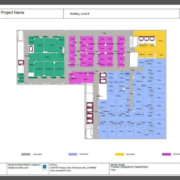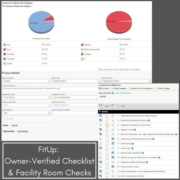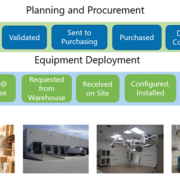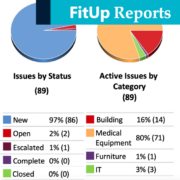Activating a New Healthcare Facility: Why Planning Early is the Key to Success
Opening a new healthcare facility is an enormous undertaking that does not end when construction is complete. While the physical building may be completed on time and within budget, the real challenge is ensuring a smooth transition to full operational readiness. Activation planning, preparing staff, workflows, and equipment for day-one functionality—is often underestimated, leading to costly delays and inefficiencies.
In a recent webinar, industry experts discussed key challenges in activation planning and best practices to ensure a successful launch. Below are critical insights on why early planning, governance structure, and technology solutions are essential to activation success.
1. Activation is More Than Just Moving In
Many organizations mistakenly assume that once construction is complete, they can simply move in and begin operations. However, operational gaps can surface without careful planning, causing significant disruptions.
Liz Callahan, Executive Director at City of Hope, explained:
“Opening a healthcare facility is like moving into a new house. You think you have everything you need, but then you realize the front door swings the wrong way, the storage isn’t sufficient, and the light fixtures require extensive cleaning every time you change a bulb. These are the types of operational surprises we need to prevent.”
Planning must account for equipment placement, staffing transitions, supply stocking, safety protocols, and more well before the move-in date to avoid these issues.
2. The Importance of a Structured Governance Process
Decision-making can become chaotic without a strong governance structure, especially when leadership changes during the project lifecycle. A governance framework helps establish clear roles, responsibilities, and a timeline for key activation milestones.
John Stiles from Ohio State University Wexner Medical Center emphasized:
“New leaders often bring new ideas, which can disrupt established plans. Setting a firm governance process and decision-making deadlines is crucial to avoid last-minute changes that delay opening day.”
A structured governance model ensures that activation remains on track, even amid leadership transitions or departmental turnover. It will also help inform a communication plan to elevate documentation of the rational for the decisions made to that point in the project.
3. Technology as a Game Changer in Activation Planning
Managing a facility activation manually through spreadsheets, phone calls, and emails can be inefficient and prone to errors. Leveraging purpose-built technology solutions, such as FitUp, can streamline workflows, enhance communication, and ensure accountability.
Callahan shared her experience using FitUp during a major hospital activation:
“With FitUp, we could track equipment deliveries, room readiness, and staff training progress all in one place. It provided a single source of truth, which kept everyone aligned and reduced last-minute surprises.”
Technology platforms like FitUp help standardize processes, track progress in real-time, and facilitate seamless activation.
4. Training and Staff Readiness Cannot Be an Afterthought
A fully operational facility requires well-trained staff who understand new workflows, equipment, and emergency procedures. Many organizations fail to allocate adequate time and resources for training, leading to inefficiencies post-launch.
Stiles advised:
“Staff training should start months before activation. If employees aren’t comfortable with new systems, it can lead to delays, frustration, and even patient safety risks.”
Building a structured training plan that includes hands-on practice, simulation drills, and role-based competency assessments ensures that employees are prepared for day one.
5. The Cost of Poor Activation Planning
When activation is not properly planned, organizations face significant financial and operational risks. Delays in opening can lead to revenue losses, while unprepared staff can result in suboptimal patient care and regulatory compliance issues.
Callahan highlighted a real-world example:
“During one project, activation planning was deprioritized until the last minute. The result? Missing supplies, uninstalled equipment, and a workforce unprepared for go-live. These delays not only cost millions but also affected patient experience.”
Healthcare organizations can avoid these pitfalls by budgeting for activation early and treating it as a critical phase of the project.
Final Thoughts: Early Activation Planning is Key to Success
Successful healthcare facility activation requires meticulous planning, strong governance, and the right technology. Early activation planning leads to smoother transitions, better staff readiness, and optimized patient care from day one. By leveraging structured governance, tools like FitUp, and focused staff training, organizations can ensure seamless move-ins while avoiding costly delays and operational issues.










